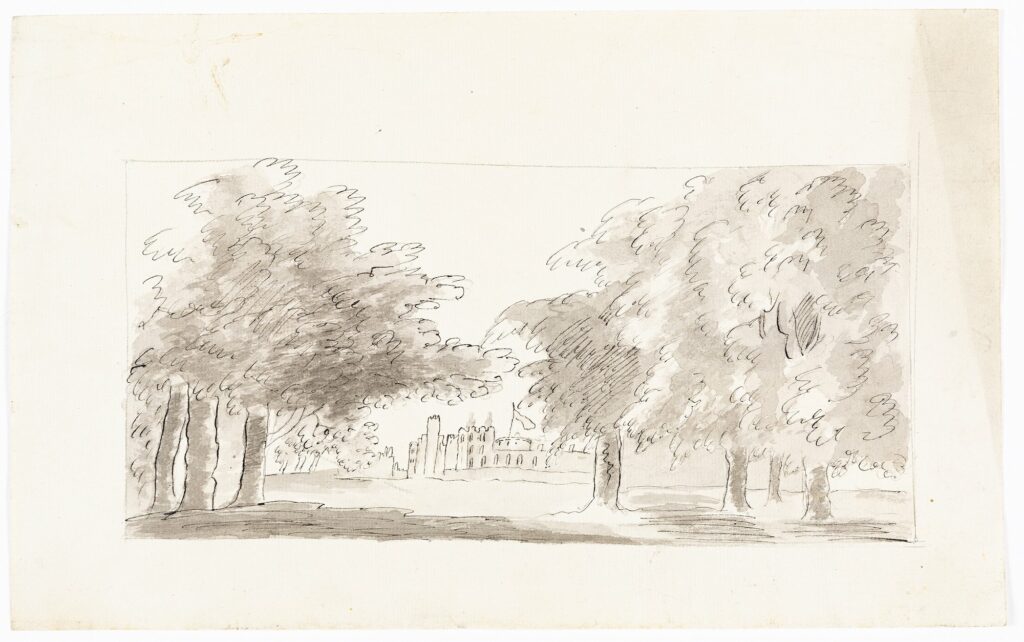On William Kent (1771)

Here is Walpole’s famous one-liner, but with the remainder of his text on William Kent quoted in full; this is as Pevsner, in his unpublished Visual Planning and the Picturesque, apparently intended it to be.
He leaped the fence, and saw that all nature was a garden. He felt the delicious contrast of hill and valley changing imperceptibly into each other, tasted the beauty of the gentle swell, or concave scoop, and remarked how loose groves crowned an easy eminence with happy ornament, and while they called in the distant view between their graceful stems, removed and extended the perspective by delusive comparison.
Thus the pencil of his imagination bestowed all the arts of landscape on the scenes he handled. The great principles on which he worked were perspective, and light and shade. Groups of trees broke too uniform or too extensive a lawn; evergreens and woods were opposed to the glare of the champain, and where the view was less fortunate, or so much exposed as to be beheld at once, he blotted out some parts by thick shades, to divide it into variety, or to make the richest scene more enchanting by reserving it to a farther advance of the spectator’s step. Thus selecting favourite objects, and veiling deformities by screens of plantation; sometimes allowing the rudest waste to add its foil to the richest theatre, he realised the compositions of the greatest masters in painting. Where objects were wanting to animate his horizon, his taste as an architect could bestow immediate termination. His buildings, his seats, his temples, were more the works of his pencil than of his compass. We owe the restoration of Greece and the diffusion of architecture to his skill in landscape.
Excepted from The History of the Modern Taste in Gardening (1771)

– Niall Hobhouse and Nicholas Olsberg